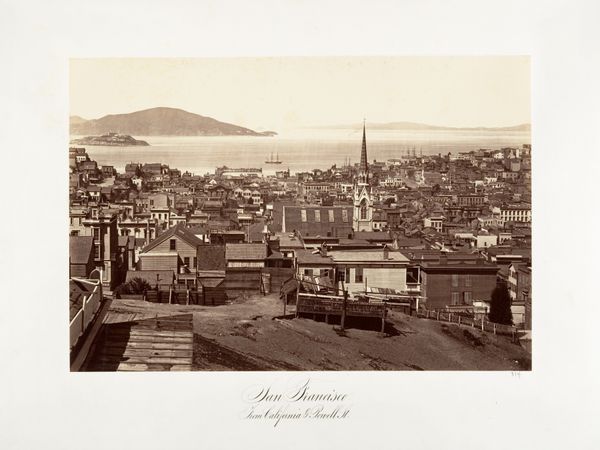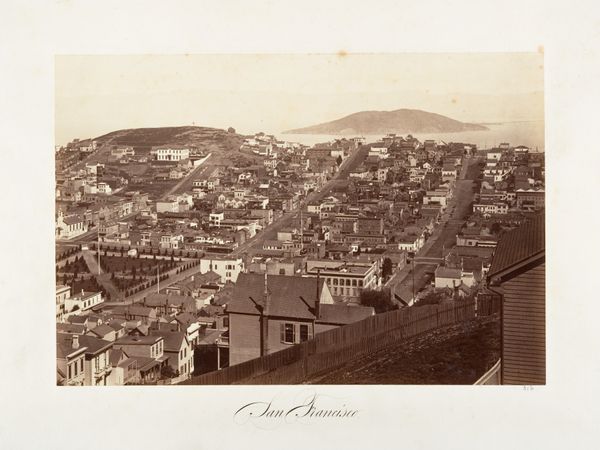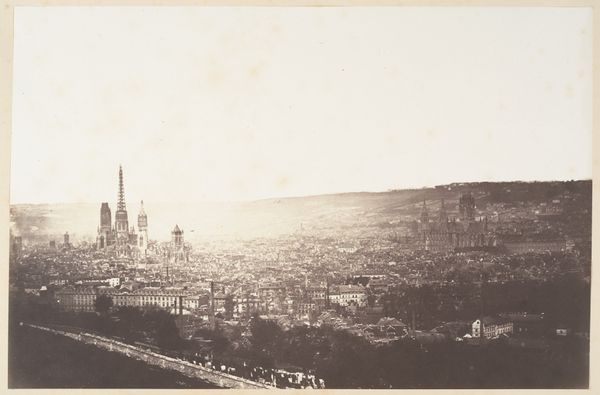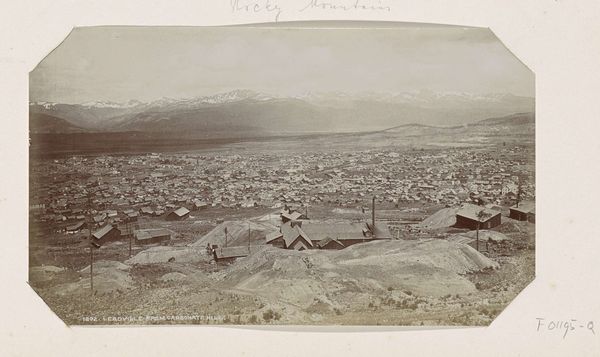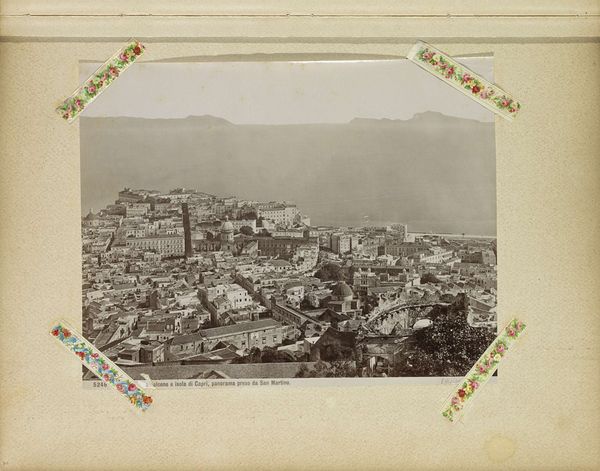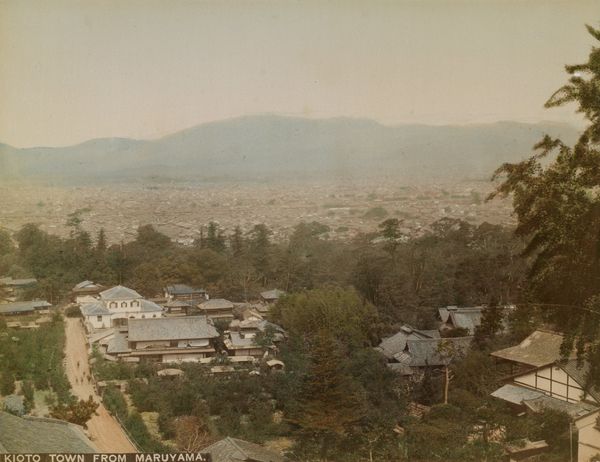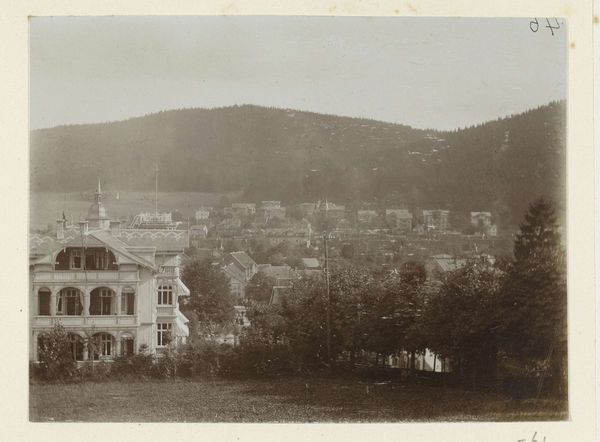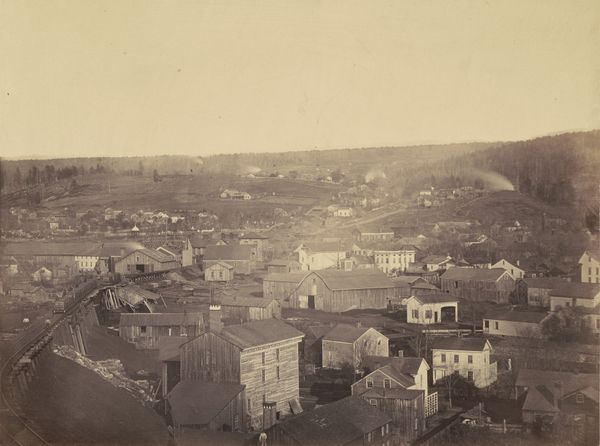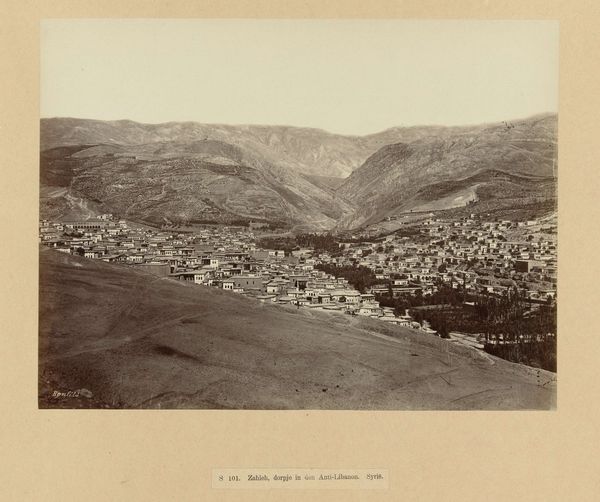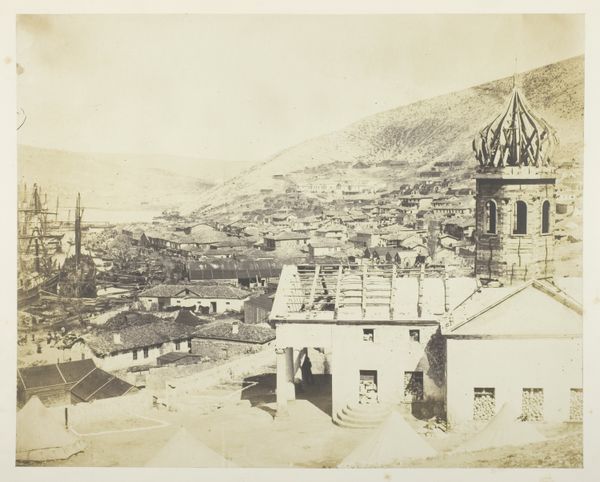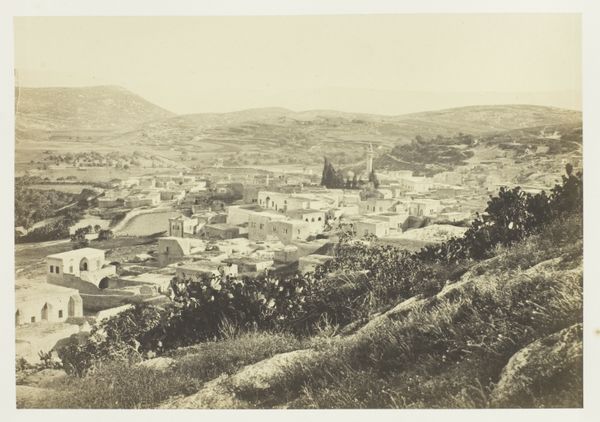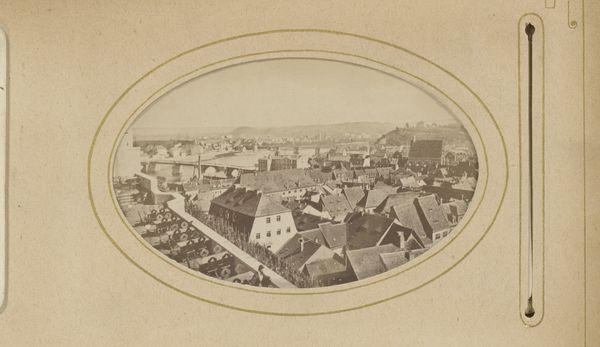
#
pencil drawn
#
light pencil work
#
pencil sketch
#
charcoal drawing
#
pencil drawing
#
pencil work
#
tonal art
#
remaining negative space
#
graphite
#
watercolor
Copyright: Public Domain
Curator: We are looking at "San Francisco, from Rincon Hill," a photograph by Carleton Watkins, taken in 1864. Art Historian: My initial reaction is of a city sprawling toward some hazy, distant promise. The composition itself is very interesting, almost melancholic with those ships seemingly adrift in the background. Curator: Note how Watkins structures the image, guiding the viewer’s eye meticulously. He balances architectural precision in the foreground with the diffuse atmosphere in the background. It creates a stratified visual field, yes? Art Historian: Absolutely, it is not merely a photograph. These orderly houses descending from the hill have stories. This cityscape signifies the restless spirit of the American West in the 19th century—a rapid influx of diverse people and the dream of possibility. The image suggests an allegory for societal development. Curator: I find more interest in how he exploits tonal gradations. It's technically impressive for its time, achieving remarkable depth and detail with the collodion process. The use of light, especially, is masterful. Observe the shadows providing structural contrast within that ornate house. Art Historian: Yet, beyond the formal technique, the multitude of ships—forests of masts—evokes maritime exploration and mercantile ambition. This symbol of movement against the static urban expansion represents how economic dreams fuel physical ones. There is an underlying myth here of a 'promised land'. Curator: The repetition of the structures provides an intrinsic rhythm. Consider the geometric pattern made through the roofs. What strikes me is how Watkins balances macro and micro forms, where urban mass reduces into geometrical shapes. Art Historian: It’s a cultural map then. But I can't help wondering, beyond the buildings, the faces unseen, each individual leaving their indelible mark on this emerging place, woven together in the collective cultural identity. Curator: Precisely, the photograph represents visual and structural tension of the time, carefully considered within its pictorial space. Art Historian: Seeing beyond mere structure helps grasp not just visual data but echoes of past voices and visions, reminding us of how images become layered over time with cultural memory. Curator: Indeed. Watkins provides much more than simply topography but also considerations of structure, form, and materiality for analysis. Art Historian: I see in the image something even broader - human drive etched permanently in light and shadow.
Comments
No comments
Be the first to comment and join the conversation on the ultimate creative platform.
